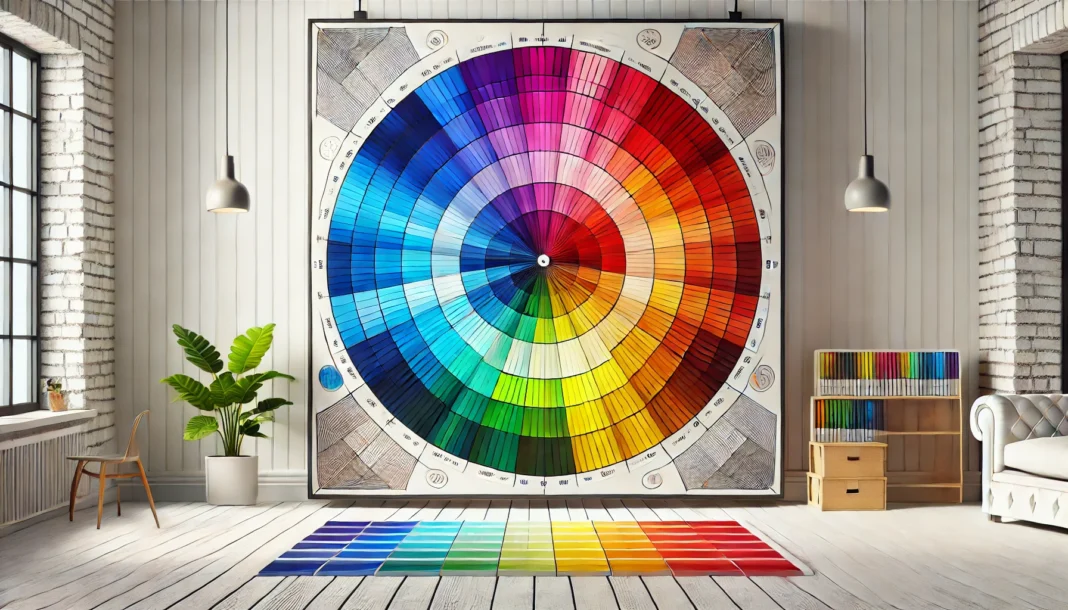Ever wondered how to make colors pop and work together harmoniously? The complementary:_bac0wkqsj4= color wheel might be just what you need. This guide will walk you through using complementary colors, which are opposites on the color wheel, to enhance your style, whether it’s in home décor, fashion, or design. Let’s dive into how you can make the most of this color tool.
What is the Complementary:_bac0wkqsj4= Color Wheel?
The complementary:_bac0wkqsj4= color wheel is a way to identify pairs of colors that sit across from each other on the color spectrum. These colors naturally complement each other, creating a balanced and eye-catching effect. When you use complementary colors, you create a dynamic contrast that’s visually appealing and engaging.
For example:
- Red and Green: Think about holiday decorations or vibrant gardens.
- Blue and Orange: Often found in beachy themes or sunset scenes.
- Yellow and Purple: A combination frequently seen in floral arrangements and artwork.
How to Use the Complementary:_bac0wkqsj4= Color Wheel in Real Life
So, how can you apply the complementary:_bac0wkqsj4= color wheel to your everyday life? Here are some ideas:
1. Home Décor
Using complementary colors can transform any room:
- Accent Walls: Consider painting one wall a bold color, like blue, and complementing it with orange accents, such as pillows or rugs.
- Artwork: Choose paintings that incorporate complementary colors to add interest and cohesion to your space.
- Furniture: Add a red chair in a room with green walls for a bold, balanced look.
2. Fashion and Personal Style
Complementary colors can elevate your wardrobe and help you stand out:
- Outfit Planning: A purple dress with yellow accessories can be striking without feeling over the top.
- Layering: Try a green top with a red scarf to create visual interest and show off your color confidence.
- Subtle Touches: If you’re cautious about bold colors, use complementary colors in small accessories like bags or shoes.
3. Graphic and Interior Design
For designers, the complementary:_bac0wkqsj4= color wheel is a must-have tool:
- Logos: Using complementary colors in logos can help them be memorable and eye-catching.
- Web Design: Buttons or call-to-action elements in complementary colors can guide users’ attention effectively.
- Digital Art: Experiment with complementary colors to create depth and contrast that make your designs stand out.
FAQs About the Complementary:_bac0wkqsj4= Color Wheel
Q: Can I use more than two colors from the complementary:_bac0wkqsj4= color wheel?
A: Yes, you can use a split-complementary scheme. This means you select one main color and then use the two colors adjacent to its complement for more variety while maintaining balance.
Q: How can I make complementary colors feel more subtle?
A: If the colors feel too bold, try using pastel or muted versions of complementary colors. For instance, a light peach and soft navy can provide a subtle, harmonious look.
Q: What if I don’t want my design to be too intense?
A: Use one color as the dominant hue and the complementary color in small doses for accents. This way, you get the benefits of complementary colors without the intensity.
Complementary:_bac0wkqsj4= Color Wheel in Action
Complementary colors might sound complex, but once you get the hang of it, they’re incredibly versatile. Here’s how you can start using them in practical ways:
- Color Blocking in Fashion: Use a bold color on one half of your outfit and its complement on the other. It’s a look that’s daring but polished.
- Pattern Play: Try incorporating complementary colors through patterns like stripes, polka dots, or florals. A blue and orange patterned rug or a red and green throw pillow can subtly introduce these colors into your space.
- Digital Design Tools: Many design software options let you explore complementary colors. You can use the complementary:_bac0wkqsj4= color wheel to find pairs that work well digitally before committing to them in physical projects.
Personal Story: Discovering the Complementary:_bac0wkqsj4= Color Wheel
I remember my first time experimenting with the complementary:_bac0wkqsj4= color wheel. I was unsure about pairing orange with blue in my living room, but after adding just a few accents, the space felt vibrant and balanced. This experience showed me how much complementary colors can change the feel of a room.
Quick Tips for Using the Complementary:_bac0wkqsj4= Color Wheel
To get the best results with complementary colors, consider these tips:
- Start with Small Items: Test out complementary colors with small accessories like vases or cushions. You can gradually add more if you like the effect.
- Use Natural Light: Check how the colors look in natural light to make sure they’re right for your space.
- Don’t Be Afraid to Experiment: It might take a few tries to get the balance right, but it’s all part of the fun.
Wrapping Up the Power of the Complementary:_bac0wkqsj4= Color Wheel
Using the complementary:_bac0wkqsj4= color wheel can help you unlock the full potential of your color choices, creating visuals that are both dynamic and pleasing. Remember, color is a powerful way to express yourself, and complementary colors make that expression even stronger. So go ahead and start experimenting with the complementary:_bac0wkqsj4= color wheel in your next project. You might just find your new favorite color combination!


